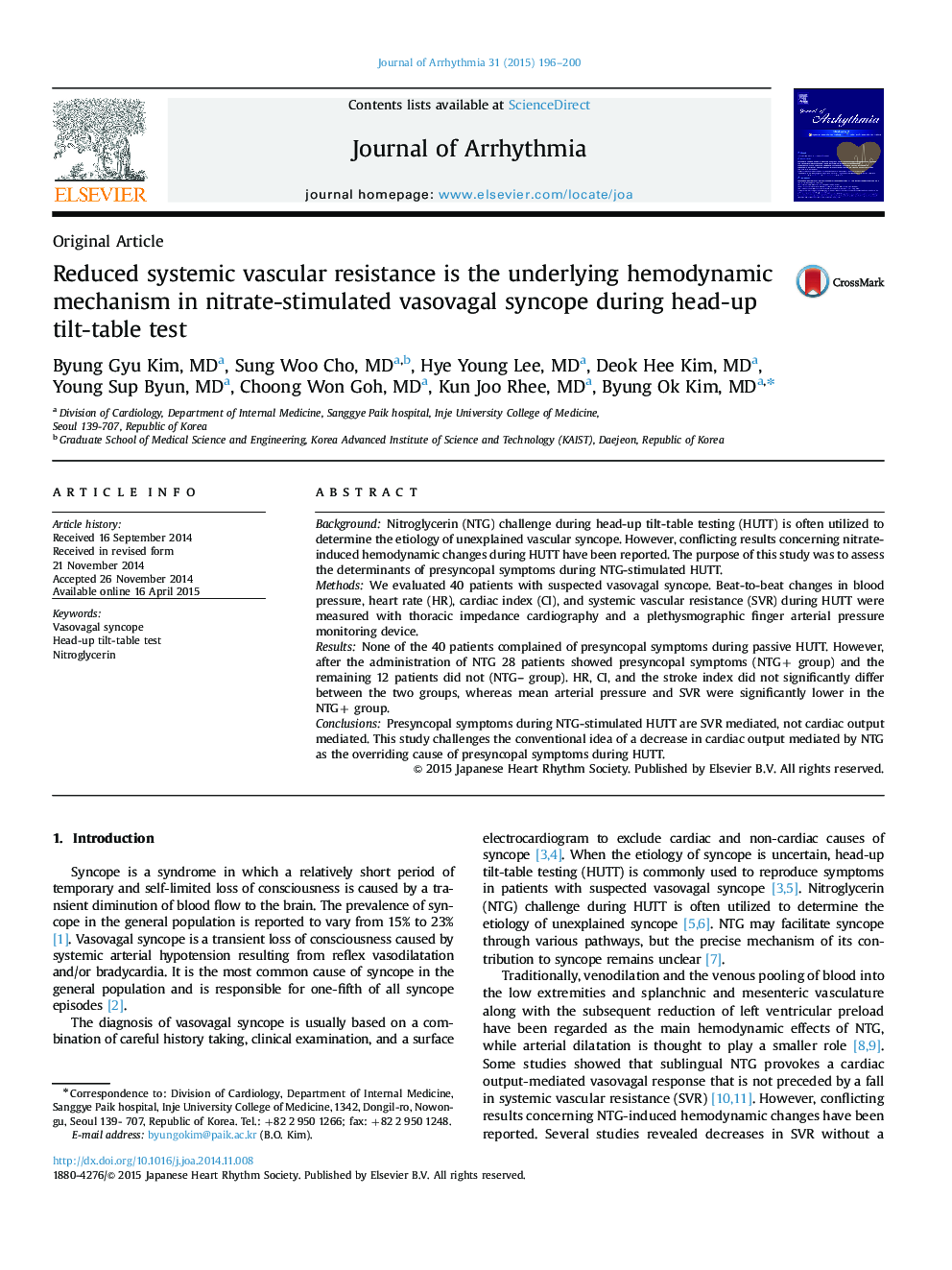| Article ID | Journal | Published Year | Pages | File Type |
|---|---|---|---|---|
| 2957534 | Journal of Arrhythmia | 2015 | 5 Pages |
BackgroundNitroglycerin (NTG) challenge during head-up tilt-table testing (HUTT) is often utilized to determine the etiology of unexplained vascular syncope. However, conflicting results concerning nitrate-induced hemodynamic changes during HUTT have been reported. The purpose of this study was to assess the determinants of presyncopal symptoms during NTG-stimulated HUTT.MethodsWe evaluated 40 patients with suspected vasovagal syncope. Beat-to-beat changes in blood pressure, heart rate (HR), cardiac index (CI), and systemic vascular resistance (SVR) during HUTT were measured with thoracic impedance cardiography and a plethysmographic finger arterial pressure monitoring device.ResultsNone of the 40 patients complained of presyncopal symptoms during passive HUTT. However, after the administration of NTG 28 patients showed presyncopal symptoms (NTG+ group) and the remaining 12 patients did not (NTG– group). HR, CI, and the stroke index did not significantly differ between the two groups, whereas mean arterial pressure and SVR were significantly lower in the NTG+ group.ConclusionsPresyncopal symptoms during NTG-stimulated HUTT are SVR mediated, not cardiac output mediated. This study challenges the conventional idea of a decrease in cardiac output mediated by NTG as the overriding cause of presyncopal symptoms during HUTT.
